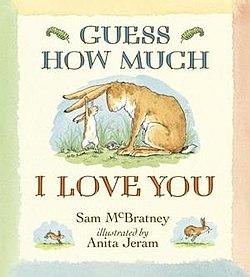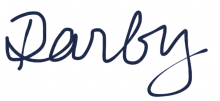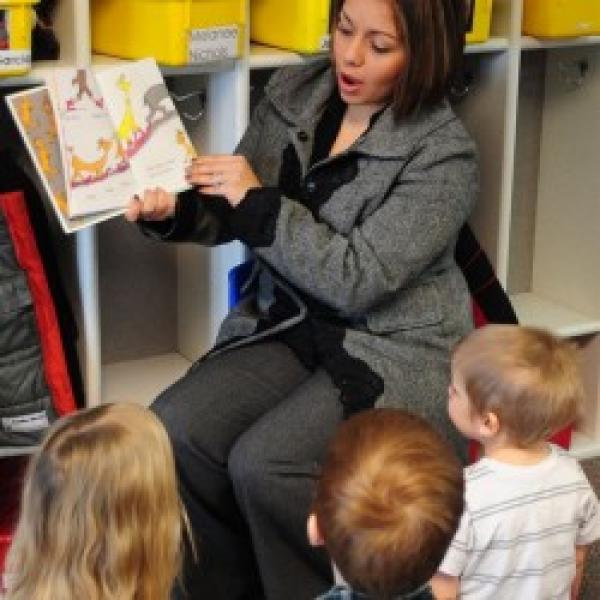Picture Books Matter: Strategies for Using Picture Books at Every Age Part 1 of 2
I remember, very clearly still, my childhood bedroom, a warm and tidy little space with light yellow walls and a bed with a blue and green floral comforter. I remember many happy evenings in this room, reading with my dad before I fell asleep. I can recall the excitement I felt at the kickoff of each nighttime routine, the sudden rush of joy when Mom told me to put on my pajamas. I would race to brush my teeth, throwback the beflowered bedspread, and climb the bookshelf in my room to pick out two or three picture books. (The climbing, it should be noted, was not approved by my parents.)

I still think fondly of the titles my dad shared with me throughout those years: The Gardener by Sarah Stewart and David Small, The Berenstain Bears series, and my favorite, Guess How Much I Love You by Sam McBratney and Anita Jeram. I remember how goofy my dad became when he read, using silly voices and finger puppets to turn the reading into a full-blown performance. He was a serious businessman by day and an outlandish thespian by night.
Since those years of bedtime stories, I have "grown-up"(or at least attempted to do so...turns out #adultingishard), and until recently, I felt that I had "grown past"picture books. When I began to take classes on literacy and secondary education, my professors shared a surprising idea with me: picture books are for everyone, not just little kids. That magic I experienced during my nighttime routine as a five-year-old? It could be replicated in the classroom. In fact, those stories still need to be heard in middle school and high school, too.
November is Picture Book Month and National Family Literacy Month, so there is no better time to reflect on the importance of picture books in our homes and in our classroom practice. Children's author Greg Pizzoli writes that picture books are about "engaging kids with a book that respects them, that appreciates their own lives and experiences, and that makes a space for them to be absorbed into a world different from their own lives, which will in turn, make their own worlds bigger and more interesting places to live."
In the interest of creating a "bigger and more interesting "world for all our students, the CLE will offer two blog posts with concrete ways to harness the power of picture books at every grade level. Part 1 will cover early literacy and upper elementary, and Part 2 will address the middle grades and high school.
Check out Part 1 below!
Dr. Betsy Okello, a member of the Teaching and Learning team for the Notre Dame ACE Academies and a faculty member in the Mary Ann Remick Leadership Program, often educates school teachers and leaders in how to perform interactive read alouds in the classroom. Okello recommends that, first and foremost, teachers set one clear purpose for the read-aloud. This purpose will inform the text that the teacher chooses and the way in which she will perform the read aloud. For example, if a teacher chooses "improving reader fluency" as her purpose, she might decide to read from the Elephant and Piggie series, books where the characters show a range of emotions, so she can model how to fluidly read questions, declarative statements, and exclamations. Then, the teacher's purpose of improving fluency will affect the way she reads the book with the class. Because her goal is fluency with this text, she will not pause often to ask questions for this read aloud. Questions would be better suited to a different read aloud where increased comprehension or another skill is the goal.
Next, Okello emphasizes that it is crucial for early literacy teachers to preview, plan, and prepare for their interactive read alouds. Too often, teachers will pull a book off the shelf for a read-aloud without having pre-planned questions aligned with the lesson's purpose. Sometimes, teachers will even share a book with students they have never read themselves. Instead, when teachers are conscientious and premeditated in their interactive read alouds, students see and hear a clear exemplar of high-level reading, and they can apply the modeled skill more readily to their own reading.
Video:
Students in upper elementary grades can understand more complex concepts than they did in earlier grades, but older children can still benefit from read alouds. Thus, in grades 3–5, picture books are ideal ways to both build reading skills and introduce lessons with difficult or complicated themes.
Teachers have some options here. They might choose to use a picture book simply as a "hook," a short, engaging activity at the onset of a lesson that generates interest and excitement in the lesson topic. For example, the wordless picture book I See You by Michael Genhart tells the story of a young man who regularly encounters a homeless woman. This book, though wordless, can prompt lively discussion and questions for a lesson on poverty or even The Great Depression. One teacher-blogger, Stephanie M, uses this text with her class to kick off a three-month service project.
Teachers can also use picture books as an anchor text for a lesson, a book that is reread several times for different purposes. The same teacher recommends using the text The Whispering Town by Jennifer Elvgren to talk about the Holocaust. Because this is a complex story recounting a traumatic event that is unfamiliar to most students, it could be useful to revisit this as an anchor text several times throughout a week, once for vocabulary acquisition, another time for reading comprehension, and a final time for fluency (or any other number of purposes that suits your students' needs).
*Continue reading Part 2 of this blog
Happy Reading,

